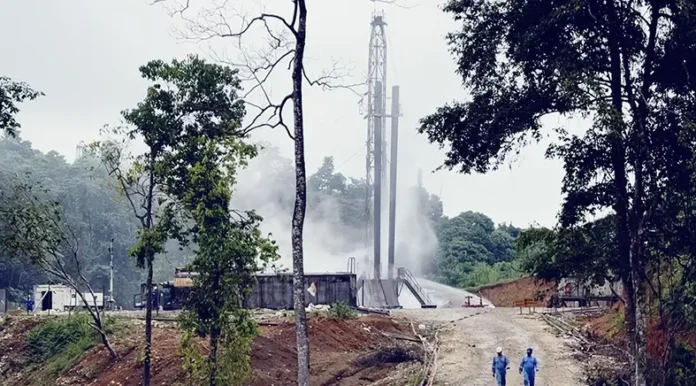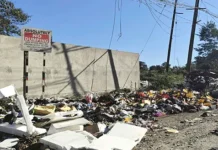[ Samshum Changmi ]
KHARSANG, 1 Nov: A blowout at Well No 76 of the Kharsang Oil Field (KOF) in Changlang district remains uncontrolled despite continued efforts by the operating company, GeoEnpro Petroleum Ltd (GEPL).
The incident reportedly occurred on Thursday afternoon at one of the newly drilled gas wells after a functional fault developed in the blow-out preventer (BOP) during the well-closing operation.
A blowout refers to the uncontrolled release of oil, gas, or other formation fluids from a wellbore after pressure control systems fail. It typically occurs when the pressure from the reservoir exceeds the containment capacity of the drilling fluid and the BOP, causing hydrocarbons to surge to the surface.
The company’s operation head, Ravishanker Prasad, informed that “due to incomplete closure and gaps in the BOP, high-pressure gas flow has occurred in Well No 76,” and added that measures are being taken to control the blowout with the assistance of crisis management teams from the OIL and ONGC, including “the use of LCM pills followed by high-specific-density mud in the affected well.”
Though he claimed that the leakage involves non-toxic methane gas, it cannot be ruled out that it is highly inflammable and such incidents often release multiple hydrocarbon compounds, which can pose serious fire and air-quality risks.
The KOF, located in Changlang district, has several operational wells and around 40 development wells under GeoEnpro’s management.
This blowout is not an isolated incident. The operation has faced similar challenges in the past, most notably in 2015, when a massive blowout at Well No 60 triggered widespread panic, forced emergency evacuations, and took more than two weeks to contain.
Moreover, the state-level monitoring and vigilance committee under the Geology & Mining Department, led by Toko Anil, later described the incident as “manmade and due to utter negligence and incompetence of the company.”
Given the recurring blowouts and the potential threat to human health and the environment, there has to be an independent inquiry to ascertain the causes of the incident, assess the safety protocols adopted by the operator, and evaluate the long-term environmental impact of continued hydrocarbon extraction in the area.



